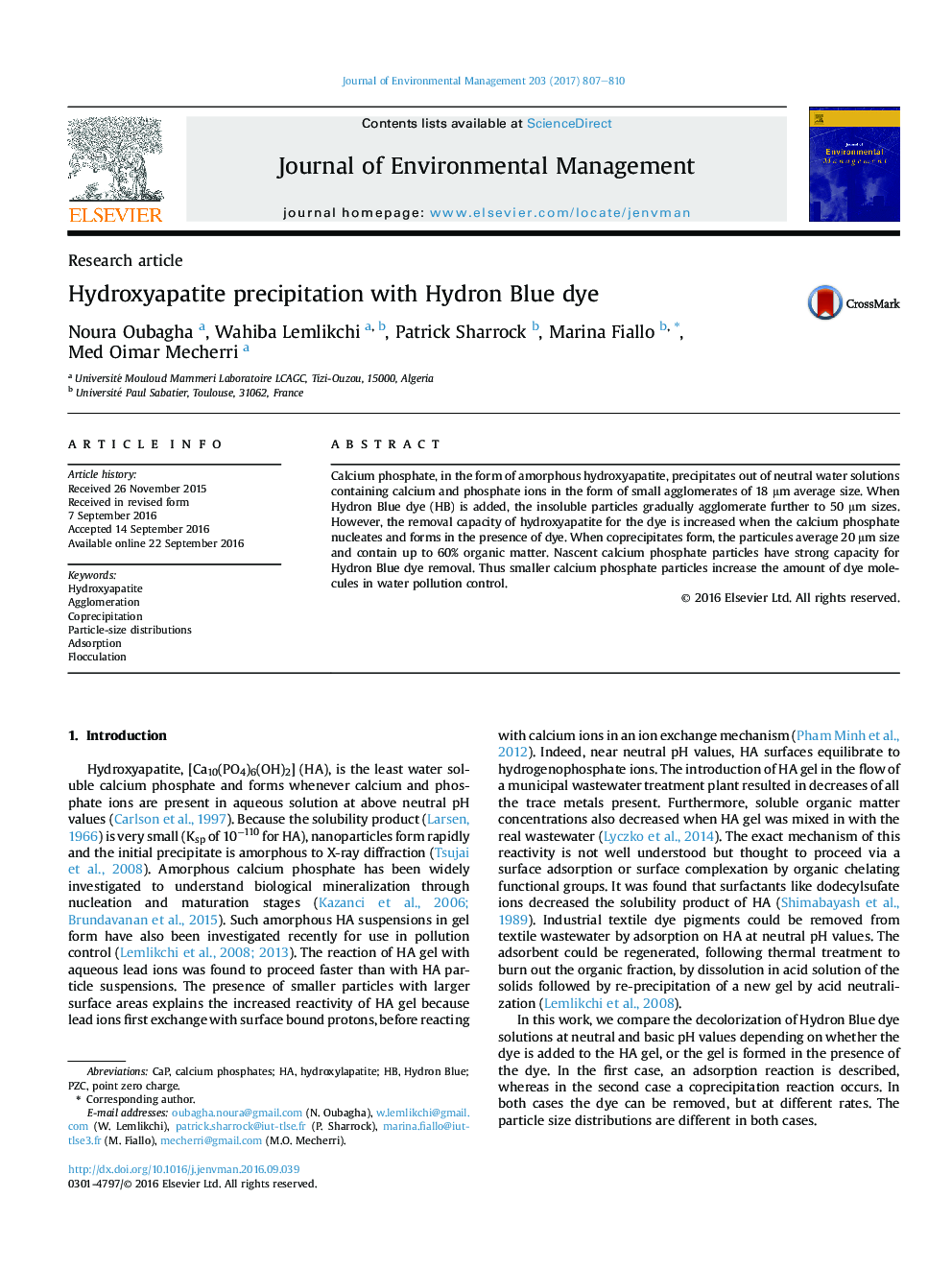| Article ID | Journal | Published Year | Pages | File Type |
|---|---|---|---|---|
| 5116441 | Journal of Environmental Management | 2017 | 4 Pages |
â¢Calcium phosphate gel removes dyes in wastewater treatment.â¢The preparation of the calcium phosphate is a critical step for dye removal.â¢Dye inclusion during coprecipitation with calcium phosphate removes more pollution.
Calcium phosphate, in the form of amorphous hydroxyapatite, precipitates out of neutral water solutions containing calcium and phosphate ions in the form of small agglomerates of 18 μm average size. When Hydron Blue dye (HB) is added, the insoluble particles gradually agglomerate further to 50 μm sizes. However, the removal capacity of hydroxyapatite for the dye is increased when the calcium phosphate nucleates and forms in the presence of dye. When coprecipitates form, the particules average 20 μm size and contain up to 60% organic matter. Nascent calcium phosphate particles have strong capacity for Hydron Blue dye removal. Thus smaller calcium phosphate particles increase the amount of dye molecules in water pollution control.
